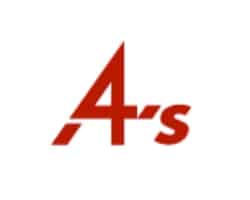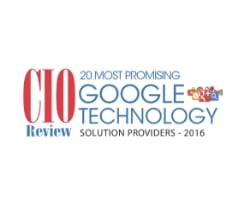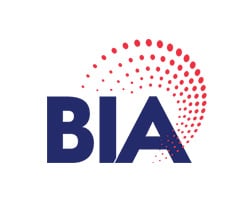In this episode of B2B Brand180, Linda interviews Eisha Armstrong, Executive Chairman & Co-Founder, Vecteris. Linda and Eisha discuss strategies for productizing B2B services, including the benefits of creating recurring revenue through more standardized, scalable offerings. Eisha shares examples, practical steps, and common pitfalls to avoid in the productization process, alongside insights into how AI integration can further enhance service productization.
01:19 Understanding Productization in B2B Services
03:06 Examples of Productizing Services
06:02 Benefits of Productization
08:10 Common Mistakes in Productization
11:56 Cultural and Organizational Shifts
15:48 Leveraging AI in Productization
17:28 Vecteris’ Approach to Productization
18:50 Rapid Fire Questions
Eisha’s LinkedIn: https://www.linkedin.com/in/eishatierneyarmstrong/
Eisha’s Books:
Productize: The Ultimate Guide to Turning Professional Services to Scalable Products
Fearless: How to Transform a Services Culture and Successfully Productize
Linda’s LinkedIn: https://www.linkedin.com/in/lindafanaras/
Millennium Agency: Brand Strategy | Marketing | Web Design: https://mill.agency
YouTube Channel: https://www.youtube.com/@mill.agency/
Linda’s Books:
Claim Your White Space
https://www.amazon.com/CLAIM-YOUR-WHITE-SPACE-CRITICAL-ebook/dp/B0CLK8VLYV
Passion + Profits: Fueling Business And Brand Success
https://www.amazon.com/Passion-Profits-Fueling-Business-Success-ebook/dp/B0CLLDDSNX/
Linda Fanaras:
Welcome to the B2B Brand 180 podcast, a place where we focus on transformative strategies and ideas and B2B branding and growth. You can learn how to make a 180 degree shift in your marketing efforts or complete reversals and brand strategies. So start to make some pivotal shifts and groundbreaking moves that redefine how you position yourself in the market. Hi, I’m Linda Feneres. Today’s host of the B2B Brand 180 podcast. And I’m very excited to bring in and introduce Aisha Armstrong. She’s the executive chairman and co founder of Vectaris, where she works with B2B services companies to productize their offerings. So hi there. How are you today? I’m great, Linda. How are you doing? I’m doing good. I’d love for you to share a little bit of information about yourself to our audience.
Eisha Armstrong:
Thank you. So I have spent the bulk of my career in product development, product management and product leadership roles, primarily for B2B information services. The bulk of that time was spent at a company called C. E. B. or Corporate Executive Board, which was purchased by Gartner in 2017. And then shortly after Gartner acquired C. E. B. I teamed up with a former colleague and we launched our current firm. Where we work with B to B services companies on how do you create more productized offerings? So it could just simply be, you know, services that are more packaged and priced like a product, or maybe they actually want to create real products.
Linda Fanaras:
That’s great, because I think as a service company you know, can be challenging from time to time because you’re, you’re constantly selling and then maybe you’re losing a client or you’re gaining a client. So to be able to have a product where there’s reoccurring revenue, I think would definitely provide a lot more opportunity for our audience. So, so let’s just talk about that a little bit more. What are some of the spectrums around product, if you’re going to actually take your services and create products? Can you provide the audience with some different examples?
Eisha Armstrong:
Yeah, yeah. So you’re exactly right. It is like a spectrum. So most of the companies that we work with, they’re offering very bespoke, customized services. And they’re usually pricing those based on time and materials, or some calculation of the time that’s going to be required. But what they aspire to, perhaps like you mentioned, is, you know, recurring revenue or ability to scale maybe sell through a professional sales force or just assure more quality from engagement to engagement. And productization is a great strategy to help with that. But it doesn’t mean become a software company, which I think it’s a misconception. There is like I said, a spectrum. So it could be as simple as just packaging up what you’re doing and offering it in a couple of different, you know, good, better, best packages with pricing that’s based on value. So I like to talk about an example that everyone can easily understand, which is a face painter at a children’s party. Okay. So, If you’re a face painter and you’re doing face painting for children and you will paint anything that a kid can imagine, you’re providing customized services. Everything is different. There’s no real ability to scale, but if you come in and you say, Hey, here’s six different designs I can do on your face, spider man, a butterfly, whatever, that is productizing your service. Like you’ve created six different packages and you can start to train people how to do those six different designs. So that’s an example of just productizing existing service where people are still doing it. But again, it’s more packaged. It’s easier to control the quality. Now then you might decide, Oh, I want to create a product, something that doesn’t require a person to deliver it. And that would be like, if you sold like Temporary face tattoos, right? So that would be an example of a product. And then maybe you want to do recurring revenue where you do a temporary face tattoo of the month club, right? So that’s kind of the spectrum of what an organization that we might be working with wants to go down. Like maybe they just want to productize their services, or maybe they want to start to create products or products as a service. And then we help them figure out how to do that without Wasting a lot of money.
Linda Fanaras:
I think that’s great because a lot of service companies are often a little, you know, myopic when they come to selling their services because they may have a range of services that they sell. But how can you package those or maybe how you bundle them? You could even co brand them in different scenarios to actually make them into more of a product versus a service. So if you were to take, like, maybe Another example might be a business consultant as an example. So they may bundle up a couple different services, maybe an assessment and maybe some sort of a strategy plan and maybe some sort of a support or execution, but they could do it into different levels and things like that. So is that really what we’re speaking about when we’re talking about?
Eisha Armstrong:
Absolutely. Yeah. And I love, I love your example of bundling because that’s a typical strategy that we see work really well for services companies where they bundle their services. perhaps maybe with a software product or a data product. So maybe they’ve developed an internal tool that their consultants use to make, to do analysis for their clients. And they can include that as the package as part of the package. Oh, you get a license to the software product for the next two years to help you maintain what our consultants do, or you get a license to this data feed for the next two years to help, you know, keep your economic forecast models that we’ve. Developed for you up to date or something like that. And then you start to get that really scalable recurring revenue But it’s it’s bundled with existing services,
Linda Fanaras:
what would you think the biggest? Advantage is of actually doing this, you know coming up with this process
Eisha Armstrong:
Yeah. So there are a few that we’ve touched on. So one, you know, it’s, it diversifies your revenue. The gross margins for products tend to be better. So, you know, traditional services, you’re looking anywhere between, you know, 40 to 70 percent gross margin, good products. Business is going to be north of 80 percent gross margin. That also then increases the valuation of your firm. So if at any point you’re thinking about an exit, having That type of gross margin profile plus recurring revenue can increase your valuation. And again, it also can improve the experience for your clients because something that is standardized, tech enabled, more packaged, is easier to control the quality. Right. You’re not as key person dependent on, you know, what’s in John’s head or, you know, what’s in Susie’s head. Then you can start to sell it again through a professional sales network. If you’re just offering a couple of different offerings versus trying to come up with something brand new for every client. You know, it’s, it’s less of a burnout culture. So client services can sometimes be really stressful for your employees. So there’s, there’s so many reasons why you might pursue this. Yeah. Yeah. And
Linda Fanaras:
I would think a huge benefit to your point would be to control costs a little bit because I think as a service organization, a lot of companies tend to customize everything. And then before you know it, it’s out of scope. It’s a little bit different than your expectation is a little bit different than theirs. But if you actually put these into either their. Yeah. productize them or you package them, you bundle them, whatever the case may be, you’re really able to control what they’re getting and then what you’re giving. So to me, it seems like it’s a really a great way for service. you know, organizations to be able to increase their revenue and create some recurring revenue to. So I know it’s fantastic. And I don’t think honestly, service organizations often think this way either. So it’s it’s sort of another way of thinking. What do you see? see some of the biggest mistakes that companies make when they try to do this. There must be a lot. I would think. Yeah.
Eisha Armstrong:
Yeah. In fact, we call them the seven deadly sins of product. Yeah. So we’ve catalogued them and we find seven pretty common ones. So the, the first one is developing a product in search of a problem. So you see a lot of services firms, you’ll have one or two clients ask for something. And then all of a sudden you think, Oh, this is a product, everybody must want it. And it’s like, well, is there really a problem that a large attractive market segment has? You know, so do some validation around what’s the problem that you’re solving as opposed to you just coming up with, oh, we want to create products and this one person wanted it or we could create this and but not really assessing whether or not the market wants it. So that’s that’s one of the big deadly sins that we send. Yeah, we see. Another one is developing products in the back in a vacuum. So to your point, Linda, this is a very different way for services firms to to think. And most product native companies are used to a very iterative product development process where you put something out there, you get feedback from the market, you perfect it a little bit more, you get feedback. So it’s, you know, it’s a very iterative development process. Professional services, we tend to be perfectionist. And we have a very high bar of what something must be before we’ll even show it to a client, let alone ask them to pay money for it. So it requires a mindset shift, but the most successful products, again, are iteratively developed with their, with their customers. So that’s kind of a big cultural hurdle that we see companies have to overcome. So those are two of the seven. Yeah. And another one I think I’ve seen more and more of is this fear of cannibalization. So we create a product it might cannibalize our services revenue and that services revenue may be higher revenue in the short term, lower lifetime value, but how do you manage that and get over that fear of cannibalizing your services revenue or mitigate your services revenue?
Linda Fanaras:
I think a lot of companies that maybe they’re starting out or have been in business for a while will tend to have this broad sweep of services that they offer, you know, whatever somebody needs, they can create the service. But to your point, if you can, put those together in some sort of systematic way. It just seems to me it would make everybody’s life so much easier for sure. And, and from the cultural changes, I can definitely see that, especially if organizations are used to working with maybe what I’ll call like customized services. And then now we have services. Some things that are, you know, more packaged up, more a lot more organized. And that in itself is a total cultural shift for a lot of companies. And they, some may feel boxed in, in some instances. So again, that would have to be addressed as part of this whole, integration process of productizing some of these, some of these things into, into place. Do you see that as the case? Yeah,
Eisha Armstrong:
I do. And, and I also see I mean, they don’t articulate it, but maybe some degree of feeling threatened. Yes. Yes. Because, if everything was very customized and it all depended on like how much expertise Aisha has and Aisha’s network and now all of a sudden we’ve, we’ve codified how Aisha does it. We’ve packaged it up. We’ve given it a different name, right? It’s not Aisha’s whatever. Then that I might feel my professional identity being a little threatened. Yeah, right. And especially now, as we talk about how professional services firms are using AI to maybe deliver things that professionals were doing in the past that can also lead to people feeling threatened. And I think it’s an important change management thing that needs to be addressed.
Linda Fanaras:
Yeah. Are there certain cultural changes that they should about ahead of time before they go down this road because it would be a business model shift. So are there things that you think they should put into place like initially to start to build that foundation for success?
Eisha Armstrong:
Yeah, if there was one thing that I would counsel leaders to think about is how do you get more comfortable, as I talked about before, in bringing your clients into the development process and asking them, right? So taking off your expert hat and putting on your learner hat, again, a lot of services providers position themselves as the experts. They always know the answer. If you want to create something new and you want it to be successful, you have to get feedback from your market segment. You’ve got to take on that learning posture and invite your clients to give you feedback, your prospective clients to to tell you that, you know, what they think of your ideas or what they think of your prototype of your product. And that’s just a very different way. services providers. It’s very different from how they typically operate. So it’s, how can you get people more comfortable with, with learning, with not knowing the answer? How can you get your organization seeing failure as a good thing, as a learning opportunity, as opposed to something that they should be embarrassed about. And part of it’s changing you know, what you celebrate in your organization. But part of it is also usually bringing in some new blood people who have experienced it. Again, more product native organizations.
Linda Fanaras:
So there are obviously stall points, I would think for a lot of organizations, especially if they’ve been working in one way and now we’re, you know, you’re saying, okay, let’s make this shift into this other way. Do you think a lot of it is just fear based? Do you think it’s just the unknown? Do you think, you know, because I, I, I could envision a lot of, sort of stall points around this process. Once you start to make these changes and the company hasn’t been, let’s say the company hasn’t done it for 25 years. Now you’re instituting something that they’ve never even considered. So there has to be stall points within the organization within staff that’s been there. So how, other than bringing in the new blood, is there strategies that they should be putting into place where they’re laying the foundation for this new way of thinking that can help make that transition a little easier?
Eisha Armstrong:
Yes, absolutely. One of the upfront stall points that we see is around not making the right level of investment and not being prepared to invest because creating a product is requires some degree of upfront investment. Usually with a service, you’re not incurring the cost of delivering that service until the client has signed. work. But here you’re having to do upfront product development, and that does require investment investment in validating whether or not it’s a good idea, investment in getting feedback from the market on your prototype, investment in developing it, and then investment in commercializing it, marketing it and selling it. And what we often see as a common stall point is not investing Enough are not being prepared to make the follow on investments as you get more market feedback, especially on the commercialization side, kind of assuming that your existing marketing function knows how to market a product versus a service or assuming that your existing sales channel can sell a product versus a service. And that, that. It’s not true. So that’s a big one. And again, usually when we’re talking to leaders who are considering productization as a growth strategy, we will ask them, what type of investment are you prepared to make and across what timeframe? Because if they’re thinking this is something they can do off the side of the desk, With very little investment, they’re not going to be successful.
Linda Fanaras:
I think, for these service organizations to make that 180 degree turn that we just spoke about. I do want to ask you, though AI continues to show up everywhere, you know, in all industries. So is there an opportunity for AI when it comes to, creating products around these service organizations?
Eisha Armstrong:
Absolutely. So the first way it came up for us is we started getting company leaders coming to us and saying, we need to reprice how we’re delivering services. If we’re going to be using AI, because we currently have engagement letters out where we price based on time and materials. And now all of a sudden we’ve taken the amount of time it takes to do an audit or a legal discovery or whatever. We’ve cut it in half because of our use of AI. Right. We don’t want to cut our revenue in half. We’re having to invest all this money in technology and building these models. So help us rethink how we move to more value based pricing. So it’s a great opportunity to start to rethink how you price and, and think about pricing based on value versus the time that it takes people to do. It’s also an opportunity to rethink your hourly rates if you need to start to embed the cost of the technology required to use this AI. Bye bye. The other thing, and where we’ve gotten really excited more recently, is how do you use generative AI in particular to solve new client problems that you couldn’t solve before? Because now you have access to more data, which makes your recommendations more accurate. You can analyze things that you couldn’t analyze before. Your professionals may have more time. So that’s the exciting part, is like, okay, what are new Client problems that we can solve that we couldn’t before.
Linda Fanaras:
So as far as your company is concerned, bacterias, how have you actually product ties? Like what are some additional things that you’ve put into place that have helped that has helped your business?
Eisha Armstrong:
Yeah, I love that question. So we, we try very hard to drink our own champagne. Yeah. So what we did very early on, you know, we started as a traditional consulting company. We saw the irony in that, but we were also subject to the same things of like feast or famine with, you know, consulting. So we thought, okay, so how can we first kind of package up the types of different engagements our clients ask us to do, whether it’s creating an innovation pipeline or doing discovery on a new product? product concept or creating a go to market plan for a new product. So those are the three areas. And then we were like, okay, what are some products that we can create kind of off the shelf products? And that’s when we started publishing books and offering training courses that people can take so that they could learn how to do this themselves. And now we have an offering in the market where for an annual subscription fee, they get access to product coach who coaches them through the process, and then they can do different accelerators to look at new ideas, and that’s all part of their annual subscription fee. So, we’ve certainly tried to live what we preach, practice what we preach And I think that’s good because it gives us a lot of empathy for our clients and what they’re going through.
Linda Fanaras:
So I’m going to ask you some rapid fire questions. But before I do that, you know, you have an impressive background at Harvard Business School. I’m a big Bostonian, so I’m all in favor of that. But I would love for you to share a little bit about your Amazon bestselling book. Oh, thank you. Yeah, that’d be great.
Eisha Armstrong:
So, back in 2001, I published product ties and it’s the ultimate guide to turning professional services into scalable products. And so this is, this is available. It goes through the seven. Deadly Sins of Productization and How to Avoid Them. And then just earlier in October published this book, Commercialize. You can see what we’re doing here with the, for those of you on video, with the covers and also the naming convention. And this is really about how do you do the pricing, the packaging, the marketing, the sales channel. for something that’s more productized versus, you know, customized service. So we get deep into that.
Linda Fanaras:
So I’ll ask you a few really quick questions you could answer with like a line or two, and then we’ll close it up. So if you were to speak to a service company and you were to recommend their first step in this process, what would that be?
Eisha Armstrong:
It would be talk to your customers and find out what urgent and expensive problems do they have.
Linda Fanaras:
And how would you approach this with your employees once you made the decision to move forward?
Eisha Armstrong:
Yeah, so I would talk about how productization can help us grow our impact not just, you know, valuation, revenue, gross margins, but how we can positively impact more companies if we take a more productized approach versus customized services.
Linda Fanaras:
Are there any best practices for pricing products? Yes.
Eisha Armstrong:
Yeah. So the best practices are to develop your packages around neat, the different needs of personas. And then price based on that. So one of the, the common mistakes we see is same price for everybody forgetting that there are different personas within a market segment and they have different needs. So you create different packages, different price points for those different personas.
Linda Fanaras:
What do you think the biggest mistake companies have made?
Eisha Armstrong:
It’s what I mentioned earlier creating a product that doesn’t solve a problem.
Linda Fanaras:
That’s fantastic. Thank you for all your feedback. I think it was great to have you here today. You’ve shared some great insight and I think it’s something that service companies frankly don’t even think about, honestly, they have that sort of service philosophy. So whatever the, customer client may need. They’re building that out based on that. So I would love for you to share how the audience can get in touch with you where they can get your book, I’m assuming Amazon, and then we’ll close it up.
Eisha Armstrong:
Yeah. So, I love to connect with people on LinkedIn. Aisha Armstrong, just shoot me a note. Let me know. You saw me on the podcast. Our website is www. vectris. com. And yeah, those books are available on Amazon, Barnes and Noble, Target, Apple book. Whoever books are sold. It’s
Linda Fanaras:
fantastic. Well, again, thank you for being on today and thank you for listening in to the B2B Brand 180 podcast, a place where you can make some transformative changes in your marketing strategy to grow your business. If you’d like to get in touch with me directly, you can find me on LinkedIn or visit lindafenaris. com. Happy to address any questions that you may have in the meantime. Happy marketing.





























